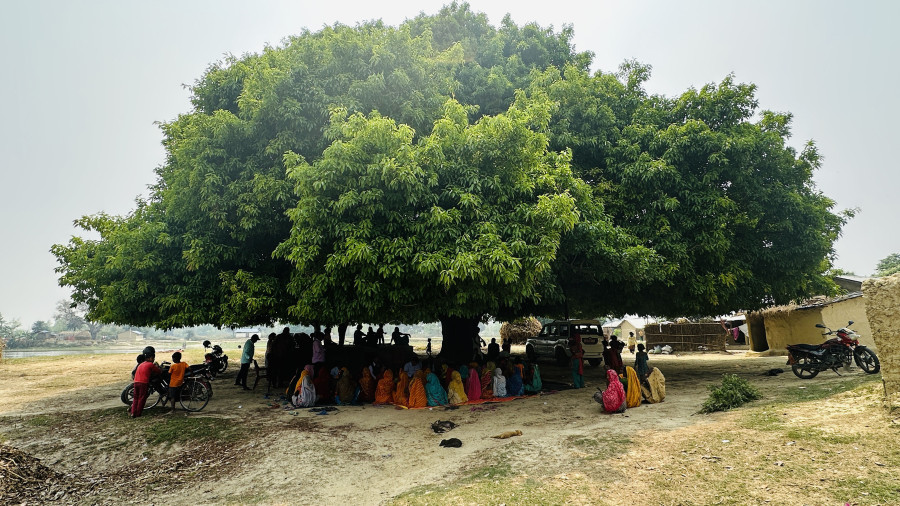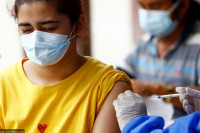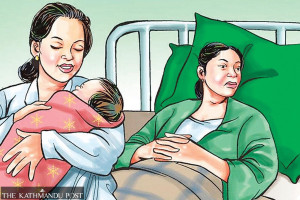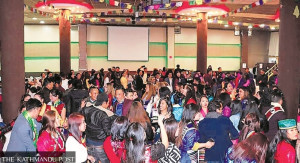Health
Heat wave conditions in Tarai trigger a surge in cases of infectious diseases
Meteorological Forecasting Division, which has issued a heat wave warning in many Tarai districts, said this is just the start and asked people to take precautions.
Post Report
Seriously ailing patients seeking emergency care at Lumbini Provincial Hospital need to be prepared to share a bed with at least two other patients, as the hospital has been experiencing a massive influx of patients of late.
As the maximum temperature crossed 38 degrees Celsius, triggering heatwave conditions in many parts of the Tarai region, health facilities reported a rise in cases of waterborne, foodborne, and vector-borne diseases, and viral fever.
“We have been placing at least three patients in a single bed in the emergency department of our hospital,” said Dr Indra Dhakal, the medical superintendent. “It is not our choice, but we cannot deny treatment to any of the seriously ailing patients.”
This was a common refrain among many hospitals in the Tarai region, which have been witnessing a massive surge in patients at a time when a rise in temperatures has triggered heatwave conditions.
Health facilities across the country generally see a rise in the flow of patients suffering from infectious and vector-borne diseases in the summer season. However, doctors have warned that health facilities in the Tarai could be overwhelmed with patients in the coming days, as most of them have remained ill-equipped and understaffed for years.
According to Dhakal, around 200 patients suffering from waterborne, foodborne diseases and viral fever visit the hospital’s emergency department every day. The number of patients seeking outpatient care has surged to 2,000.
“Apart from emergency beds, we have 540 beds in other departments. Most of them are occupied,” said Dhakal. “The coming days will be more challenging, as we have yet to see the patients of heat stroke, and an imminent dengue outbreak. Besides, we are seriously understaffed.”
The hospital has already reported several cases of dengue this year.
Likewise, Bheri Hospital in Nepalgunj has all beds in its geriatric ward occupied by ailing elderly people. Doctors at the hospital reported that only one out of 36 beds in the general ward of the medicine department was vacant on Friday afternoon. Several patients awaited beds in the hospital’s emergency department.
“Every day, 250 to 300 patients seek outpatient care in the emergency department of the hospital only,” said Dr Nirajan Subedi, director at the hospital. “The number of patients suffering from infectious diseases—diarrhoea, vomiting, fever and others—have shot up alarmingly with the rise in temperatures.”
Subedi said that as his hospital is understaffed, health workers suffer burnout due to excessive workload. Each doctor has to examine over 100 patients in the outpatient department. The rise in temperatures will certainly increase patient flow in the coming days, according to Subedi.
The Meteorological Forecasting Division of the Department of Hydrology and Meteorology on Friday evening issued another heat wave warning in many Tarai districts, where the maximum temperature crossed 39 degrees Celsius. This is the second heat wave warning issued within a week. Some districts reported temperatures over 40 degrees on Saturday as well.
On Saturday, Bhairahawa recorded 42.2 degrees Celsius, Dhangadhi 41, Nepalgunj 40.6, Janakpur 38.3, Simara 38, Dipayal 38, Birendranagar 37.3, Ghorahi 36.9, Pokhara 33.8 and Kathmandu recorded 32.7 degrees Celsius.
Last year, heat wave conditions affected hundreds of people in the country’s southern belt. Heat wave occurs when the maximum and minimum temperatures at a location are unusually high continuously over a three-day period.
Exposure to excessive heat can result in headache, nausea, weakness, dizziness and fainting. Heat-related illnesses include heat stroke, heat exhaustion, heat cramps and heat syncope (fainting). Heat stroke is the most severe form of heat-related illness and requires immediate medical attention.
Doctors ask people residing in the Tarai region to take precautions against the risk, remain hydrated and avoid outdoor activities during the day if possible.
Nepal is one of the world’s most vulnerable countries to the climate crisis and has witnessed frequent extreme weather events over the past decade and a half. The country witnessed some unusual patterns of rainfall triggering devastating landslides and floods in the past couple of years. Experts have linked these incidents to the recent phenomenon of climate change.
The average annual maximum temperature of Nepal rose by 0.056 degrees Celsius between 1971 and 2014, according to a study conducted by the Department of Hydrology and Meteorology in 2017.
Globally, extreme temperature events are increasing in frequency, duration and magnitude. Scientists blame climate change for an early onset of summer and intense heat.




 10.12°C Kathmandu
10.12°C Kathmandu













